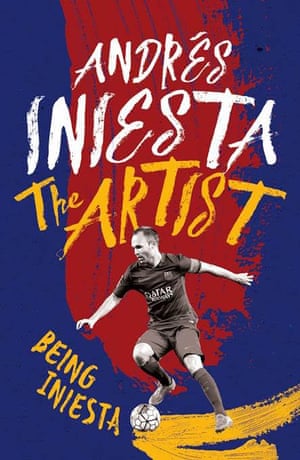
“I think Paco defined him perfectly,” Guardiola says. Paco Seirulo was Barcelona’s former physical coach, the man from whom Lorenzo Buenaventura learnt; now Guardiola makes Seirulo’s description his own. “Andrés is one of the greats. Why? Because of his mastery of the relationship between space and time. He knows where he is at every moment. Even in a midfield where he’s surrounded by countless players, he chooses the right path every time. He knows where and when, always. And then he has this very unique ability to pull away. He pulls out, then brakes, then pulls out again, then brakes again. There are very few players like him.
“There are footballers who are very good playing on the outside but don’t know what to do inside. Then there are players who are very good inside but don’t have the physique, the legs, to go outside. Andrés has the ability to do both. When you’re out on the touchline, like a winger, it is easier to play. You see everything: the mess, the crowd, the activity is all inside. When you play inside, you don’t see anything in there because so much is happening in such a small space and all around you. You don’t know where the opposition is going to come at you from, or how many of them. Great footballers are those who know how to play in both of those environments. Andrés doesn’t only have the ability to see everything, to know what to do, but also the talent to execute it; he’s able to break through those lines. He sees it and does it.
“I’ve been a coach for a few years now and I have come to the conclusion that a truly good player is always a good player,” Guardiola says. “It’s very hard to teach a bad player to be a good one. You can’t really teach someone to dribble. The timing needed to go past someone, that instant in which you catch out your opponent, when you go past him and a new scenario opens up before you … Dribbling is, at heart, a trick, a con. It’s not speed. It’s not physique. It’s an art.”
Lorenzo Buenaventura says: “What happens is that Andrés brakes. That’s the key, the most important thing. People say: ‘Look how quick he is!’ No, no, that’s not the point. It’s not about speed, about how fast he goes; what it’s really about is how he stops and when, then, how he gets moving again.”
Guardiola adds: “Tito Vilanova defined him very well. Tito used to say: ‘Andrés doesn’t run, he glides. He’s like an ice hockey player, only without skates on. Sssswishhh, sssswishhh, sssswishhhh …’ That description is evocative, very graphic, and I think it’s an accurate one. He goes towards one side as if he was skating, watching everything that’s going on around him. Then, suddenly, he turns the other way with that smoothness he has. Yes, that’s it, Andrés doesn’t run, he glides.”
Guardiola adds: “Sometimes in life, it’s first impressions that count and the first impression I have of Andrés was the day my brother Pere, who was working for Nike at the time, told me about Iniesta. I was still playing for Barcelona myself and he said: ‘Pep, you’ve got to come and see this kid.’ It was before the final of the Nike Cup. I remember getting changed quickly after training and rushing there, dashing to the stadium. And yes, I saw how good he was. I told myself: ‘This kid will play for Barcelona, for sure … he’s going to make it.’ I told myself that, and I told Pere that too.
“On my way out of the ground after that final when Andrés was the best player on the pitch, I came across Santiago Segurola, the football writer. I said to him: ‘I’ve just seen something incredible.’ I had this feeling that what I’d just witnessed was unique. That was my first impression of Andrés.
“But later,” Guardiola admits, “I came to really value something else Andrés does, something that he had made me see with time: the importance of attacking the centre-backs. No one does it. But watch and you see it. If the central defender has to step out, everything opens up; the whole defence becomes disorganised and spaces appear that weren’t there before. It’s all about breaking through lines to find space behind them. Open, then find.
“For example, we set up our attack so that Leo Messi could attack the central defenders,” Guardiola explains. “We had to attack in such a way as to get the ball to Andrés and Leo so that they could attack the central defenders and that opened them up. When we managed that, we knew that we would win the game because Leo scored goals and Andrés generated everything else: dribbling, numerical superiority, the ability to unbalance the game, the final pass, both to the outside and filtered through the middle. He sees it all and he has that gift for dribbling that’s so unique to him. That dribbling ability is everything today. And it was Andrés who opened my eyes to the importance of an inside forward or midfielder being able to dribble too. If he dribbles, if he carries the ball and goes at people, everything flows. With time, I saw that.”
No comments:
Post a Comment